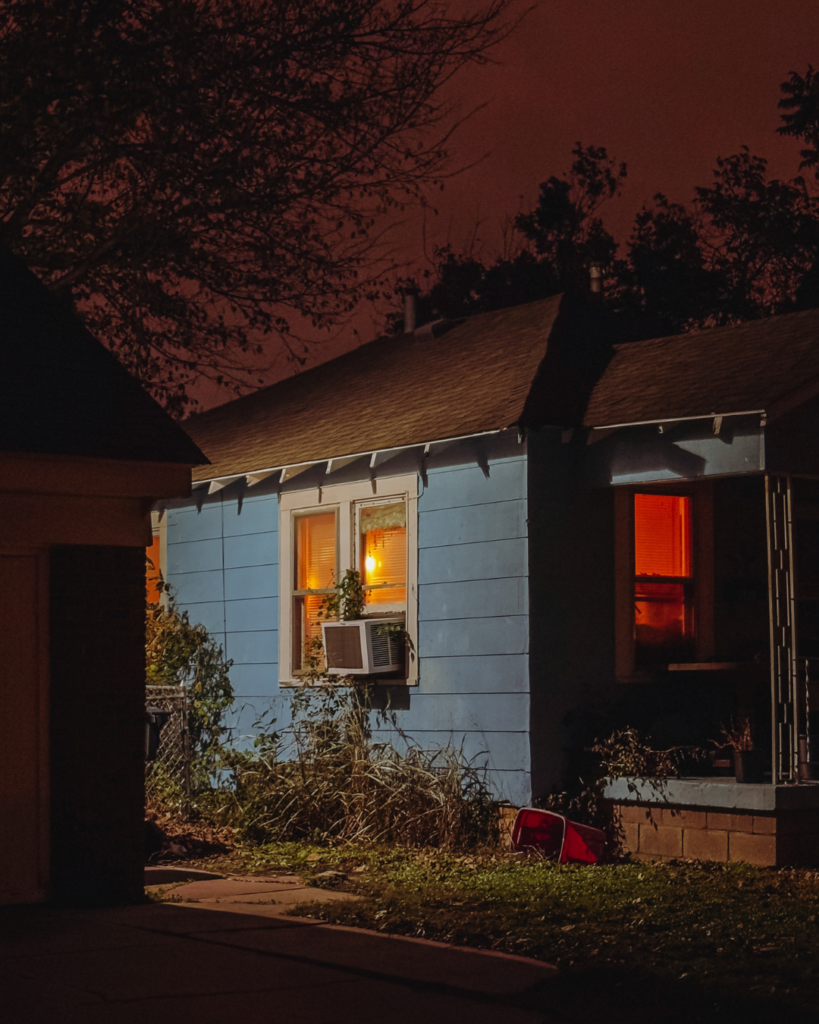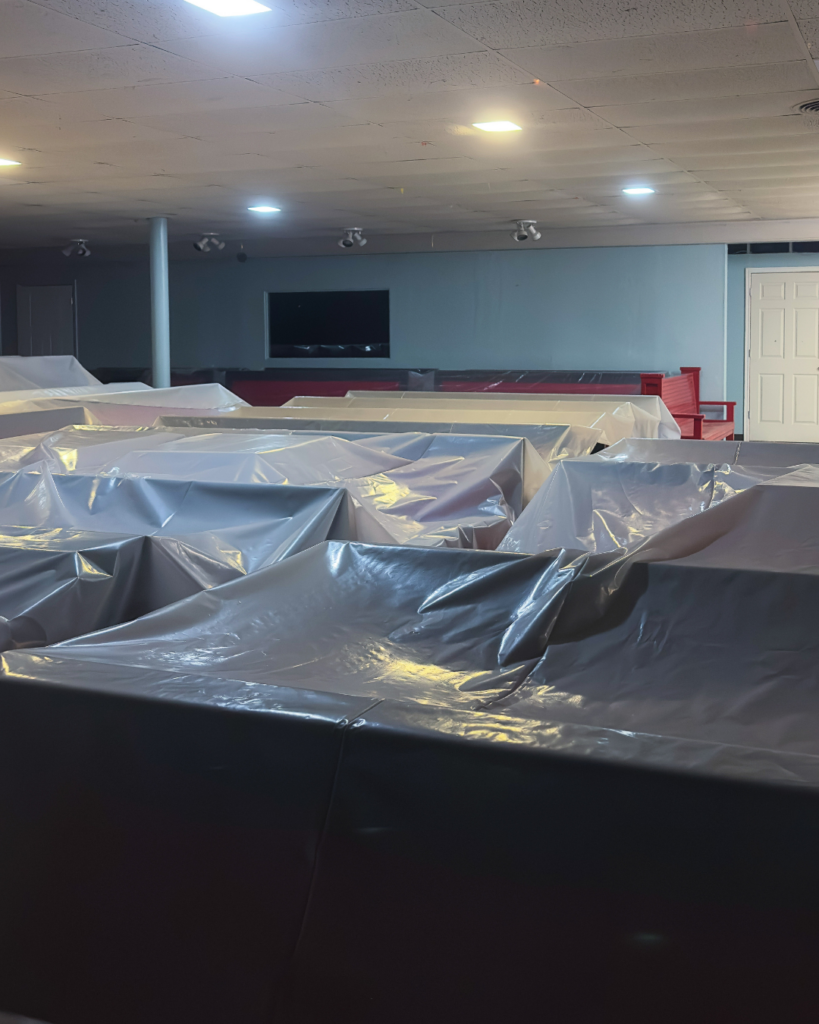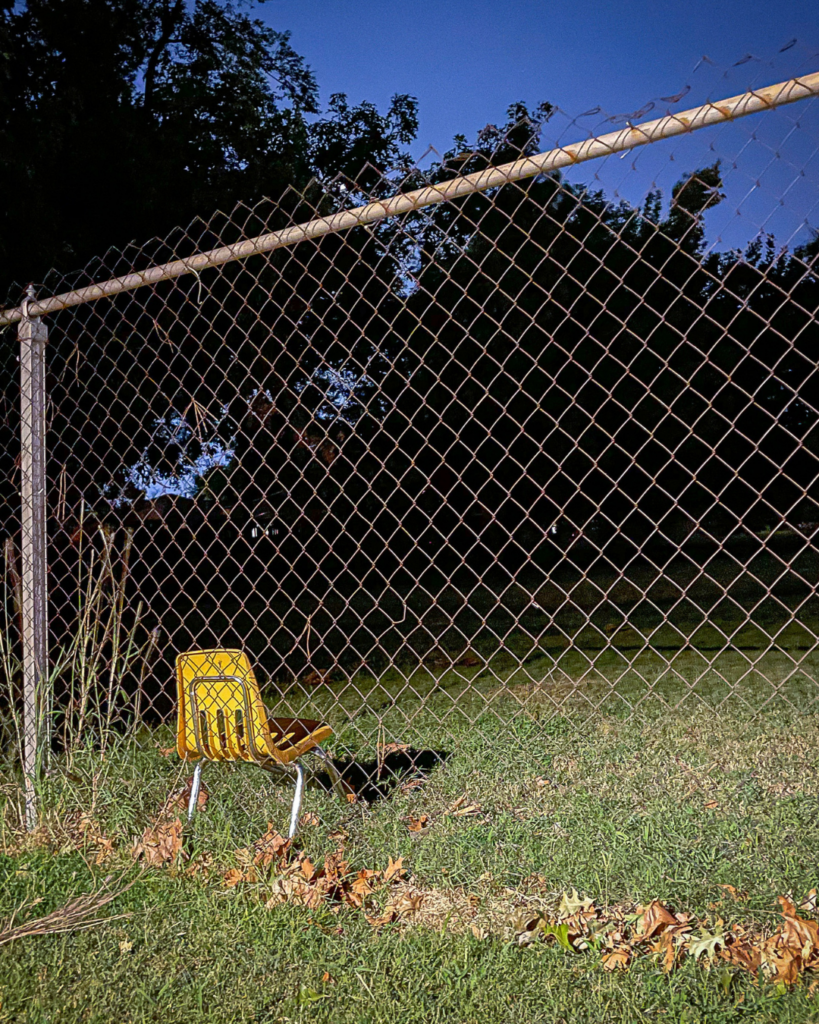
Display of “Light Left On” at OCU Norick Art Center. (Photo/Bryan Cardinale-Powell)
“A signal – an invitation – a warning; vacant and possessed. A light left on at night is common but not uncomplicated, like a photograph,” Bryan Cardinale-Powell, Associate Film Professor and Chair at Oklahoma City University describes his work.
Currently on display at the OCU Norick Art Center, Cardinale-Powell’s photography invites students, professors, and the community to experience this exhibit.
Open Monday through Friday from 8 a.m. to 10 p.m., “Light Left On” is free to the public and offers an opportunity to dive into the subtle beauty of everyday scenes frozen by photography.
Cardinale-Powell’s passion for photography is deeply influenced by his family’s long history with the art form.
His grandfather photographed caskets for catalog illustrations, while his father captured images of people telling their stories through his work.
This lineage of photographers has shaped Cardinale-Powell’s voice.
From an early age, Cardinale-Powell enjoyed observing the world around him, capturing images without being involved in the chaos around him. Through this detached observation, he “got into a kick of photography at night” (Cardinale-Powell).
The unique lighting of Oklahoma City’s streets, paired with the stillness of the night, provided the perfect backdrop.
“You never know what you’ll see,” Cardinale-Powell says. “I try to stay open… It’s less about intention and more about reaction.”
Each photograph captures something familiar- an everyday storefront or a quiet street scene.

Display of “Light Left On” at OCU Norick Art Center. (Photo/Bryan Cardinale-Powell)
Through Cardinale-Powell’s lens, these moments are laced with new meaning.
A photograph of a storefront with plastic coverings, lit by the soft glow of an odd assortment of lamps, offers a new sense of mystery.

Display of “Light Left On” at OCU Norick Art Center. (Photo/Bryan Cardinale-Powell)
The shadows, the hazy light, and the unknown beneath the plastic ask the viewer to reconsider their initial assumptions of the work.
Some of Cardinale-Powell’s artistic inspiration comes from well-known photographers such as Alec Soth and Stephen Shore.
Soth’s wandering, observational style of photography and Shore’s candid photos of everyday life in the ’70s and ’80s have influenced Cardinale-Powell’s approach to finding beauty in the seemingly mundane.
One image that stands out in the exhibit is a small yellow chair sitting at the edge of a wire fence, casting a shadow into the dark.
At first glance, the scene seems simple; however, its air of solitude brings mystery along with it.

Captivating demonstration of the bright yellow chair. (Photo/Bryan Cardinale-Powell)
The bright yellow chair, in juxtaposition with the darkness, carries a multitude of interpretations. It could represent childhood youthfulness facing the impending darkness out in the distance.
It could be a person’s way to hop the fence without climbing or escaping the enclosed space.
The shadow could represent that even the brightest of objects have dark shadows.
Or it could just be a chair at the viewer’s discretion.
As Cardinale-Powell suggests, “Think of photography more like having a conversation with what you see.” His work creates a dialogue between the viewer and the image, inviting interpretation and reflection on one’s life.
So, whether you are drawn to the glow or intrigued by the shadows, take a moment to visit the exhibit.
Experience the quiet conversations that these photographs create and let them reveal something new about the world you thought you already knew.


thank you